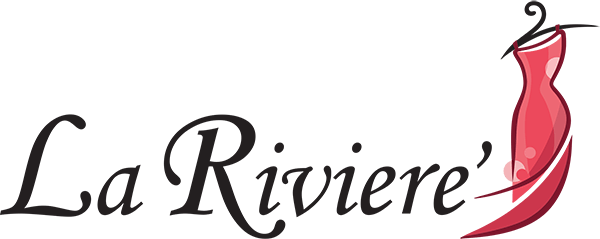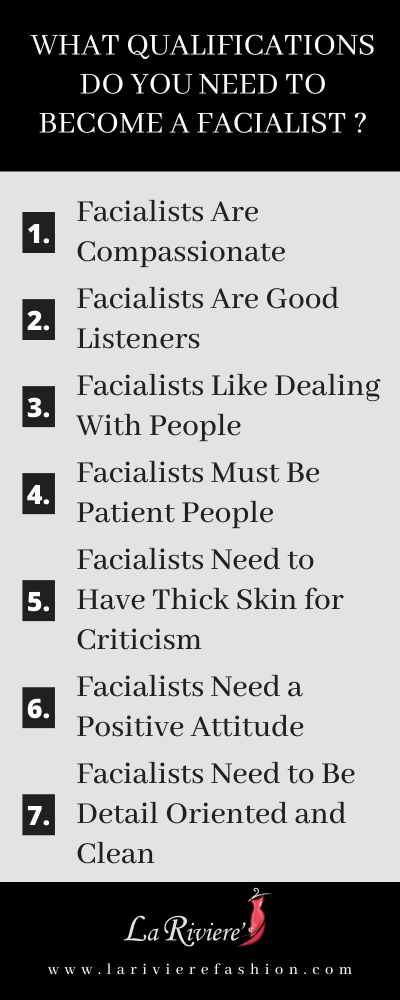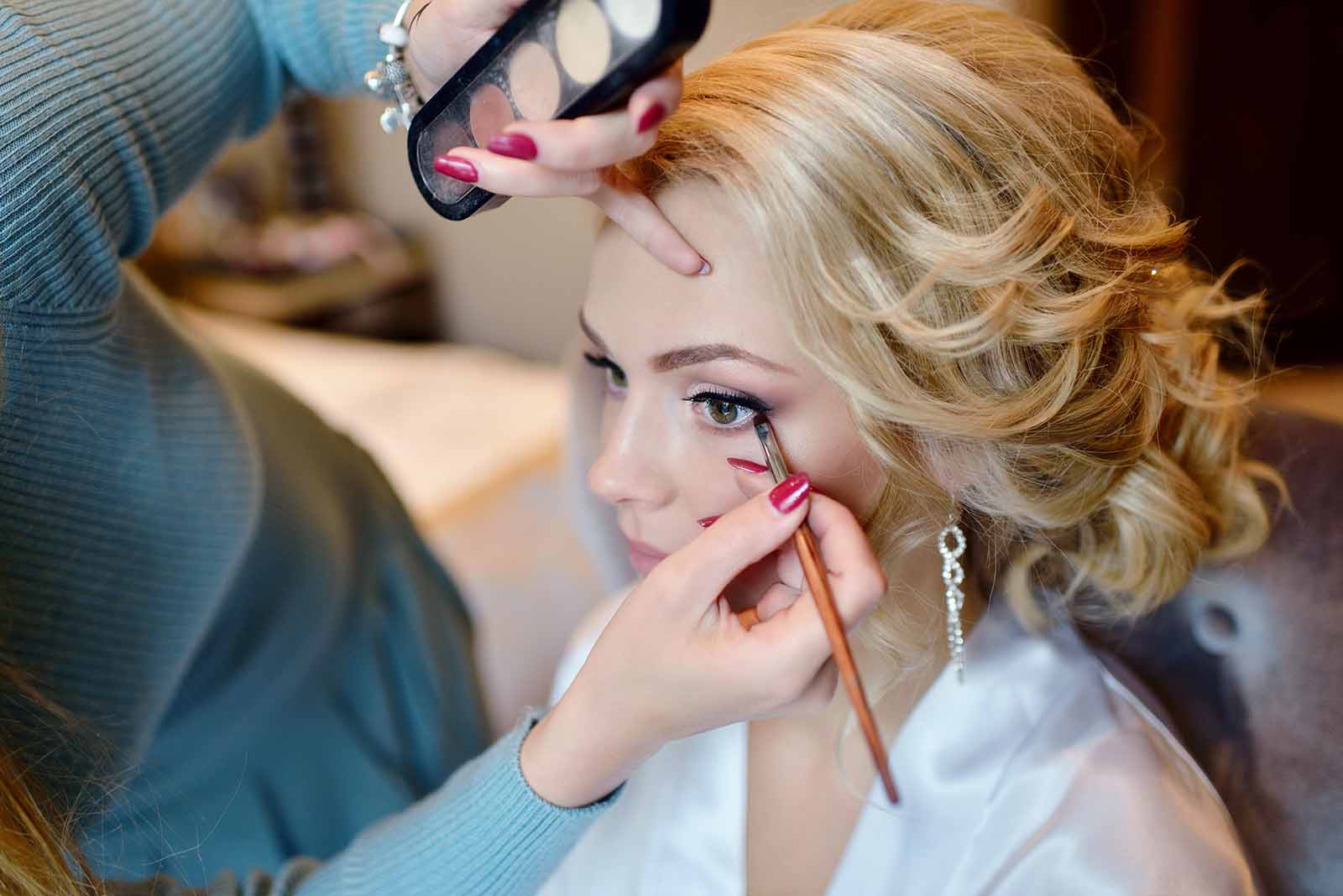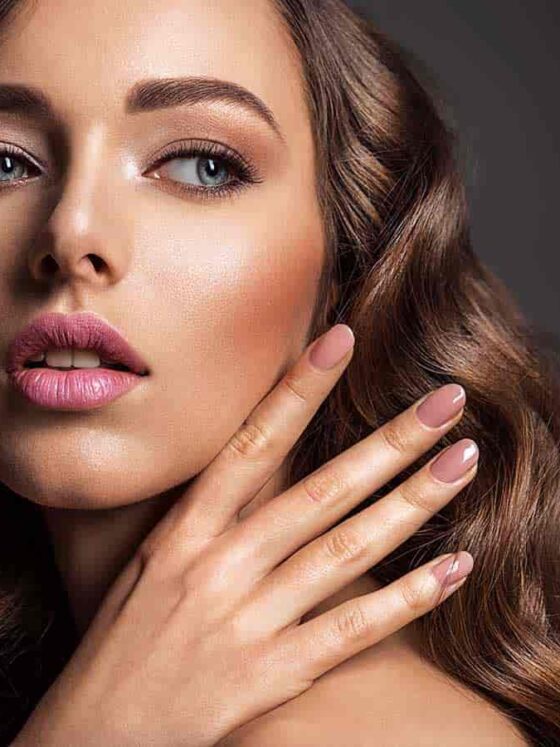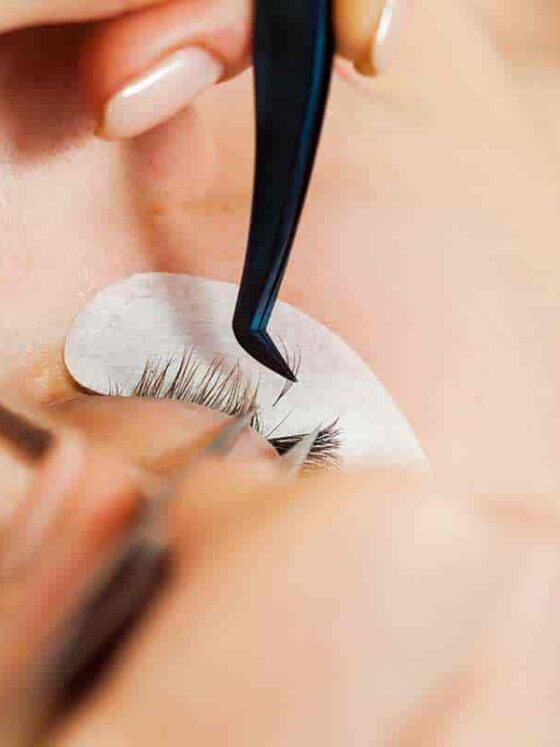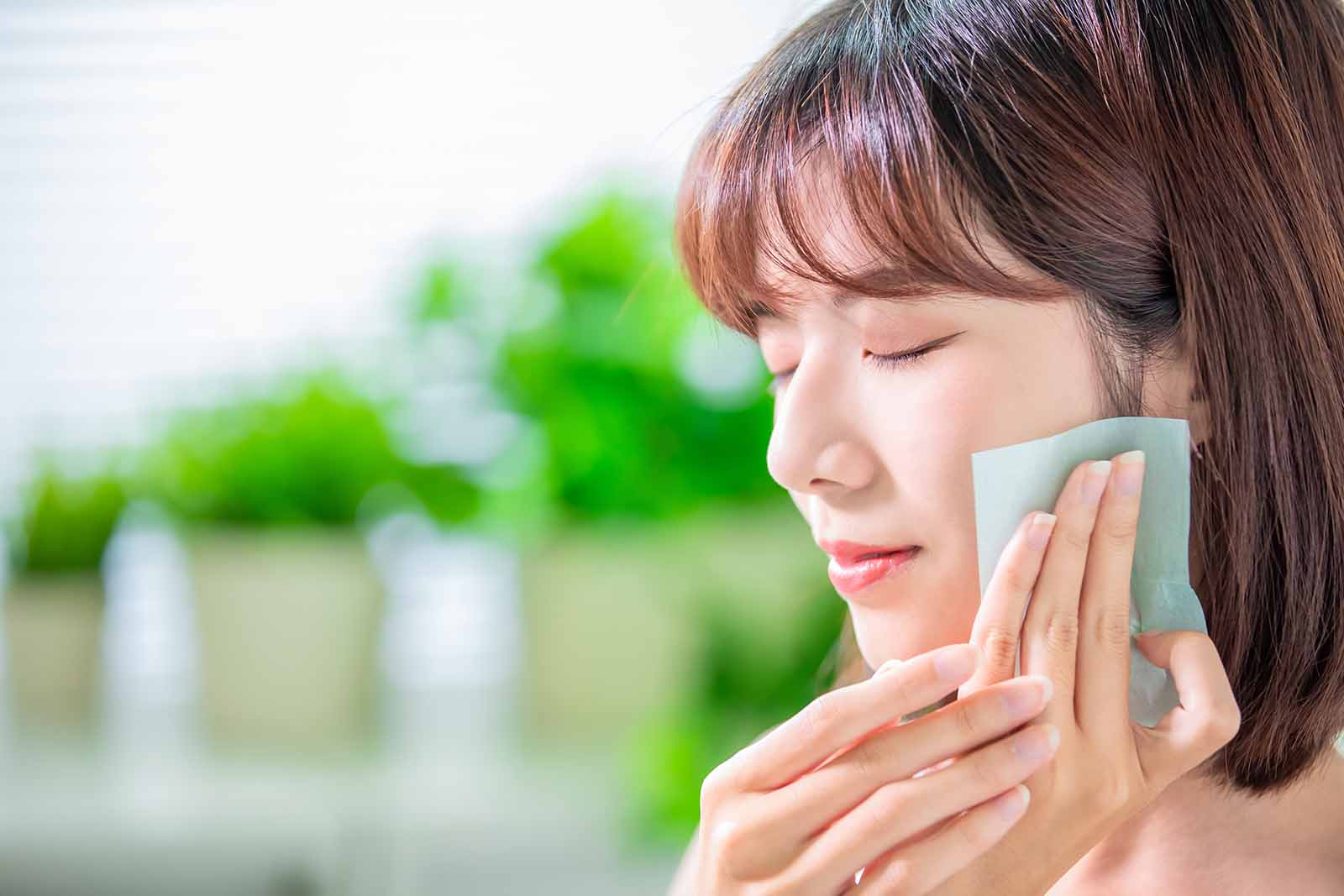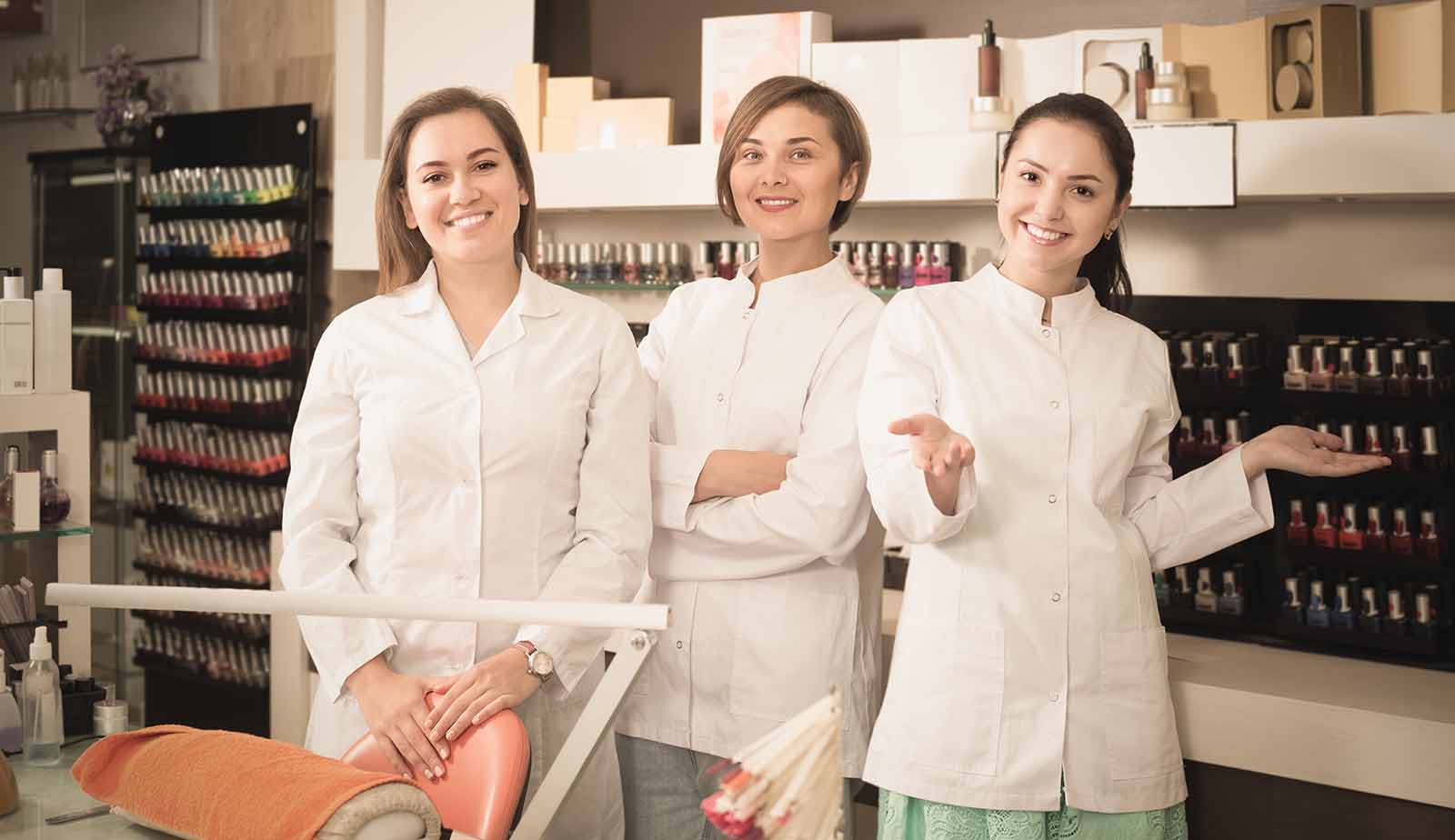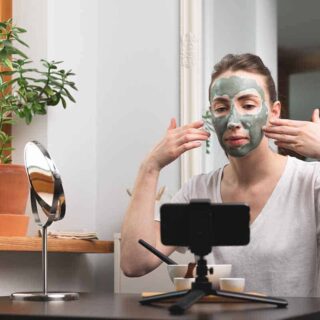How to Become a Facial Esthetician
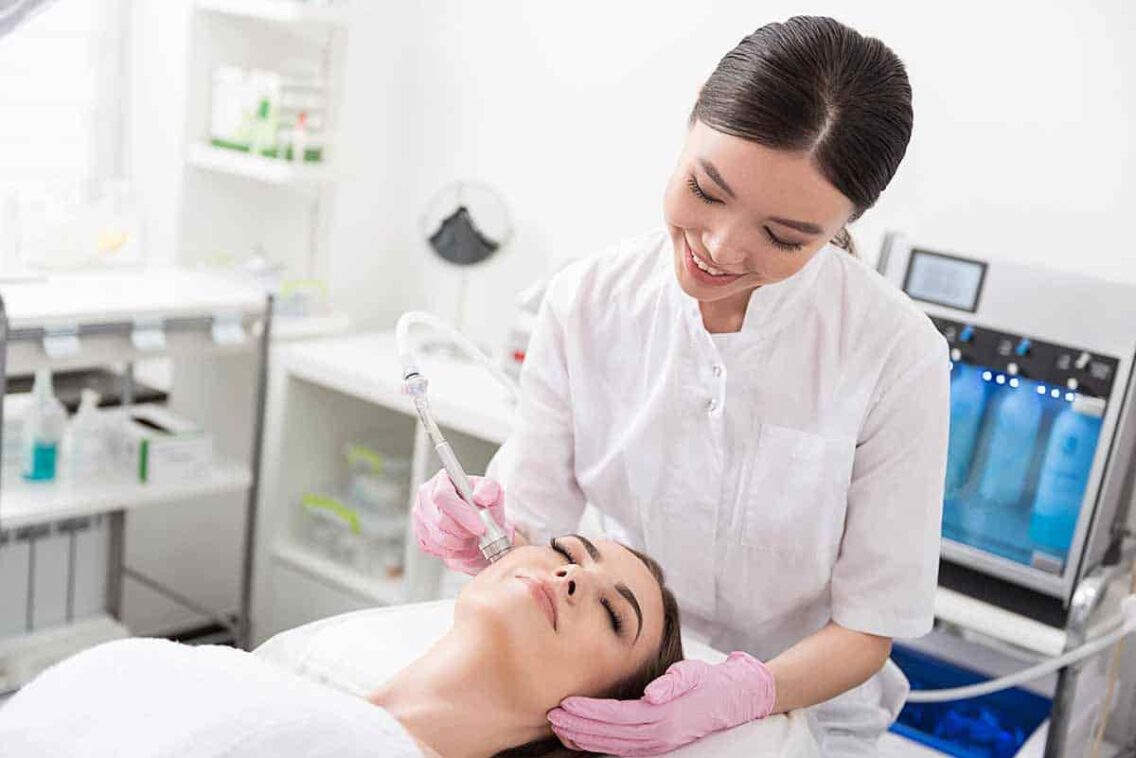
Facial estheticians provide a much-needed service by performing beauty treatments and other skincare regimens on the face. Even though it’s possible to become certified for professional facials online, it still requires a good deal of study and discipline to pick up this skill.
Beauty specialists can become certified facial estheticians by pursuing an esthetician’s certification through an online training course or a local cosmetology school. It can take anywhere from 600 hours to 1000 hours to complete esthetician training.
Becoming an esthetician can be a lucrative career choice, but it’s important to know what you’re getting into when choosing this profession. Keep reading to learn more about the field of facial aesthetics and how you can become certified in giving professional facials.
Is a Facialist an Esthetician?
A facialist and an esthetician are synonyms for the same basic role, but someone who defines themselves as a facialist may restrict themselves to certain superficial treatments. A certified esthetician may be trained in more advanced techniques like microdermabrasion or high-frequency facials.
A facialist is an esthetician, but an esthetician may not necessarily be a facialist only. Estheticians can also be certified to handle several other types of beauty treatments like body waxing, spray tanning, and chemical peels.
You can find the best esthetician certifications online here!
How Do I Become a Facial Esthetician?
To become a facial esthetician, you need to attend a technical training school for cosmetology. This schooling can be done either in person or (more commonly) through an online training program. Online training for cosmetology is becoming a popular option for obtaining an education since certification can be completed on your own schedule.
What Type of Work Does a Facial Esthetician Do?
A facial esthetician mostly concentrates on facials, but facials are a much more diverse range of skin treatments than you might think if your idea of a facial is throwing on a clay mask at home. Here are just a few of the different kinds of facials you might receive from a facial esthetician:
- Chemical peels: Chemical peels are salves formed of mild acidic solutions such as hydroxy acid that can help remove the top layer of skin from the face, including any damaged cells and dead skin cells. While sometimes mildly irritating or painful, the process of a chemical peel can leave skin looking smoother and younger. (Source: Mayo Clinic)
- Microdermaabrasion: Microabrasion is a form of facial where the top layer of skin, blackheads, and whiteheads is carefully removed by hand or with a set of specialized tools by the facial esthetician. Microabrasion needs to be performed carefully to prevent pain and blemishes. (Source: Healthline)
- Acne facial: Acne facials are a unique type of facial meant to soothe and treat people with facial acne. Since facial acne can be painful and may require medical intervention from a dermatologist depending on the severity of the symptoms, specialized training is required to perform this facial type. (Source: VeryWellHealth)
- Ageless facial: Ageless facials are facials that focus on returning youth and vitality to the skin of the face. Many are specialized luxury facials such as 24-karat gold facials, green tea facials, caviar facials, and more. (Source: Milita Advanced Skin Care)
Along with giving facials, facial estheticians may also include other face-related beauty treatments such as facial fillers, facial massage, and facial acupuncture. Some esthetician practices focus more on holistic measures such as jade rollers and reflexology rather than chemical intervention like chemical peels.
To learn more about the essential products needed for a facial check out this article!
How Long Does It Take to Become a Facialist?
The amount of time it takes to become a facialist depends on the class schedule of the esthetician being trained.
One of the biggest advantages of online schooling for estheticians and other cosmetologists is that they can take classes at their own pace, allowing them to pursue other education or work opportunities at the same time as they’re being trained for a facialist position.
The average amount of time it takes for someone to complete a certification in facials is roughly 600 hours or six months. (Source: Beauty Schools Directory) However, this time may be increased by either more advanced esthetician training or a more relaxed class schedule.
However, to become state-certified, you might be required to commit to even more hours. For example, it requires 1000 hours of esthetician training to receive state certification in Alabama. Each state or territory has its own rules about the requirements for esthetician certification.
To learn about the steps to becoming a certified esthetician check out this article!
What Qualifications Do You Need to Become a Facialist?
Just like other skilled technicians, facialists are required to complete a certification or diploma in esthestics, facials, and/or cosmetology to practice professional facials legally on the public. These certifications are largely in place to protect consumers since poor sanitary practices or facial techniques can potentially cause serious damage to clients.
Along with the professional qualifications, there are also certain qualities or personality traits that are useful for facialists to have if they want to be successful in the beauty business. Here are some of the most useful qualities you’ll need if you want to become a facialist.
Facialists Are Compassionate
It may be embarrassing for some clients to approach a cosmetologist or facial esthetician to address some of their concerns with the appearance of their face. Clients may be dealing with a range of physical issues, such as the following (Source: Medical Life Sciences):
- Facial acne
- Wrinkles/aging
- Rosacea and other blemishes
Blemishes or signs of aging on a person’s face can make them extremely shy or self-conscious about their looks. It’s up to the facial esthetician to show no judgment towards a person for their facial appearance and to make them as comfortable as possible in the beauty salon regardless of how they look.
Good facialists understand that having someone touch or manipulate the sensitive skin of your face can be a scary and overwhelming sensory experience, so it’s important to be empathetic to your clients and their needs.
Be prepared to slow down or stop if a client gets overwhelmed, and be sure to explain everything that you’re doing so that the client is comfortable with the entire process.
Facialists Are Good Listeners
You might have an idea of what kind of treatment you think a client needs when they walk in the door, but a smart strategy for being an esthetician is to sit back and let the client tell you what they want before you start making recommendations. Facialists need to listen carefully to their client throughout the facial process to avoid causing them pain or discomfort.
You also want to keep the lines of communication open so that a client can communicate their wants to you freely without feeling like you will talk over them or ignore what they said. You don’t want to wait to listen to a client until the end of the facial when it turns out they didn’t like something you were doing and now want more work or a partial refund for what was performed.
Facialists Like Dealing With People
Needless to say, you shouldn’t decide to go into cosmetology or facial esthetics if you don’t like being up close and personal with people you don’t know well.
You might easily develop a friendly and comfortable rapport with regular clients you interact with on a monthly basis. However, as a facialist, you’ll also need to be able to take on new clients easily and make them comfortable at once in order to keep them as repeat customers.
Facialists don’t necessarily have to be extroverts – some clients appreciate when a cosmetologist dispenses with the small talk and gets straight to work – but it does help to have a friendly and open disposition towards newcomers. This can help set new clients at ease right away and makes them more likely to return to your chair for a facial in the future.
Facialists Must Be Patient People
Cosmetology like facials are a luxury service, and as a result the demographic of people you might see coming into your beauty salon may have a bit of a chip on their shoulder with regards to what kind of service they expect.
Aside from snobby rich customers, you will also inevitably find yourself running into clients that rub you the wrong way or may try to get out of payment by causing a scene or complaining.
While it’s smart to be as patient and kind as you can in these kinds of situations since your reputation as a facialist will definitely precede you, it’s also smart to learn when to draw the line when it comes to this type of entitled or antisocial behavior from clients.
The key to being a patient facialist is to remain polite throughout any negative interaction and resist the urge to lash out at unruly clients, especially on social media. At the end of the day, you always have the option to comp the facial and eighty-six any client who ends up being more trouble than they’re worth.
Facialists Need to Have Thick Skin for Criticism
If you work as a professional facialist, chances are you will end up in some kind of interaction with a client where they are flat-out unhappy about the results of their facial, or they don’t enjoy the process of the facial itself.
It’s easy for facialists to get defensive or angry when their services aren’t appreciated as much as they think they should be. However, if you’re going to work with the public, you need to learn how to take criticism (constructive or otherwise) without bursting into tears or lashing out in anger.
It’s easy to be professional when you’re dealing with easygoing customers. It’s the critical or difficult-to-please client that will make or break your business. These customers tend to be more picky than the average client, but they also tend to be loyal when they find a facial esthetician they like.
Facialists Need a Positive Attitude
While it’s supposed to be a luxurious spa treatment, getting a facial can be an uncomfortable or even frightening experience. This is especially true for those clients who are dealing with more advanced facial treatments such as acne facials, chemical peels, or microabrasion.
Having a polite and sunny attitude as soon as clients walk in the door helps them feel comfortable with you working on their face. It also serves to make the entire facial experience more pleasurable for the client and increases the chance that they will return for more services in the future.
Facialists Need to Be Detail Oriented and Clean
Aside from the obvious health code violations, maintaining a sterilized and clean beauty salon is a crucial qualification of being a good facialist. Nobody wants to visit a salon that looks unhygienic and unkempt. Keep flat surfaces clear and wiped down, and keep any facial products well-organized with the labels facing out so they’re easy to find or display.
Going above and beyond to make sure that your facial salon is immaculate for each and every customer can go a long way towards making sure they show back up for the next treatment. On the flip side of that, a client that walks into an obviously dirty salon will not likely ever show up in your chair again.
Facial Esthetics is a Growing Field
One of the most exciting things about becoming a facial esthetician is that this is an industry that is expanding every year. With more and more clients excited to try new state-of-the-art anti-aging technologies and other contemporary facial products, the field of facial cosmetology is only expected to grow even more in the future.
